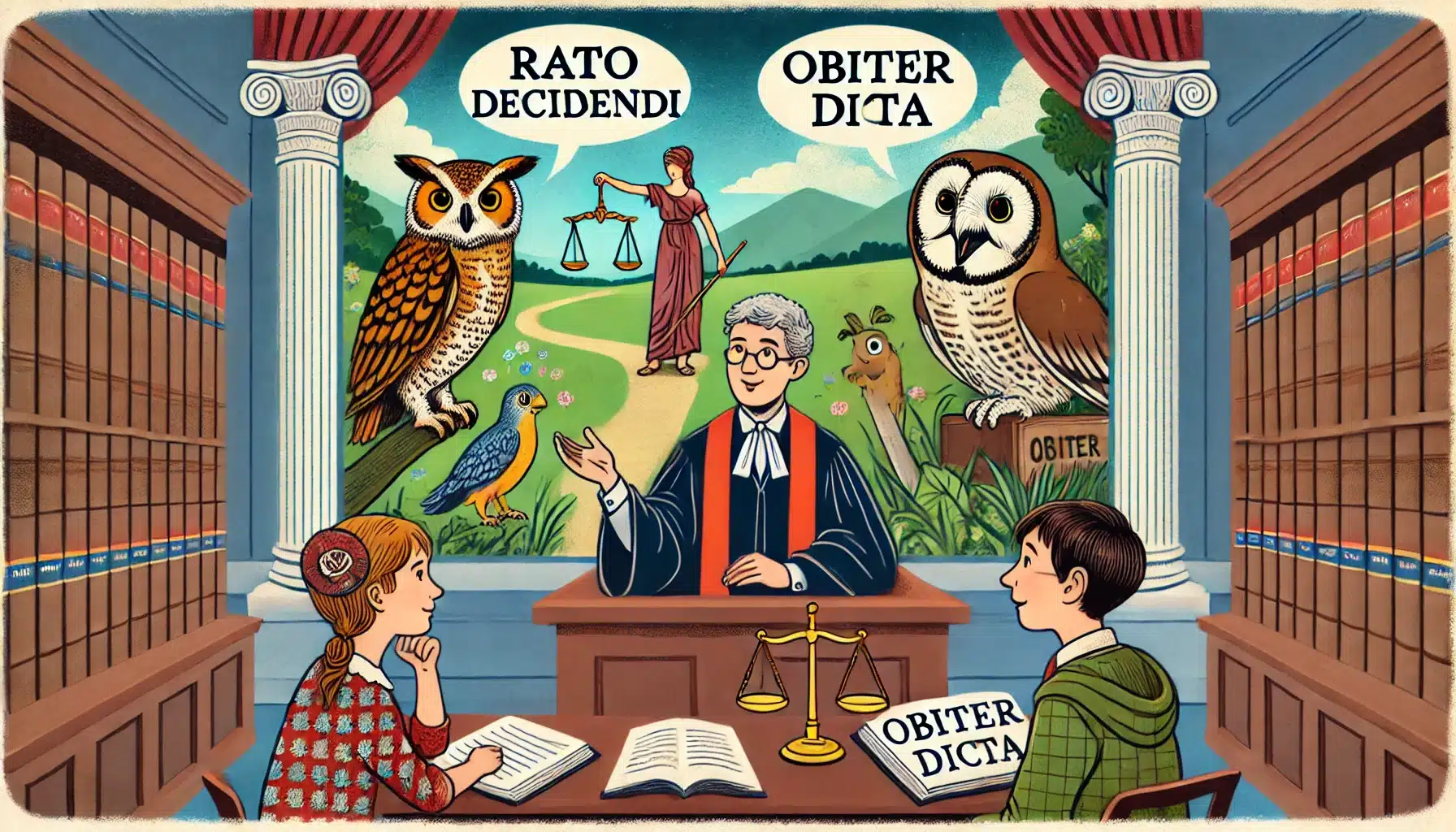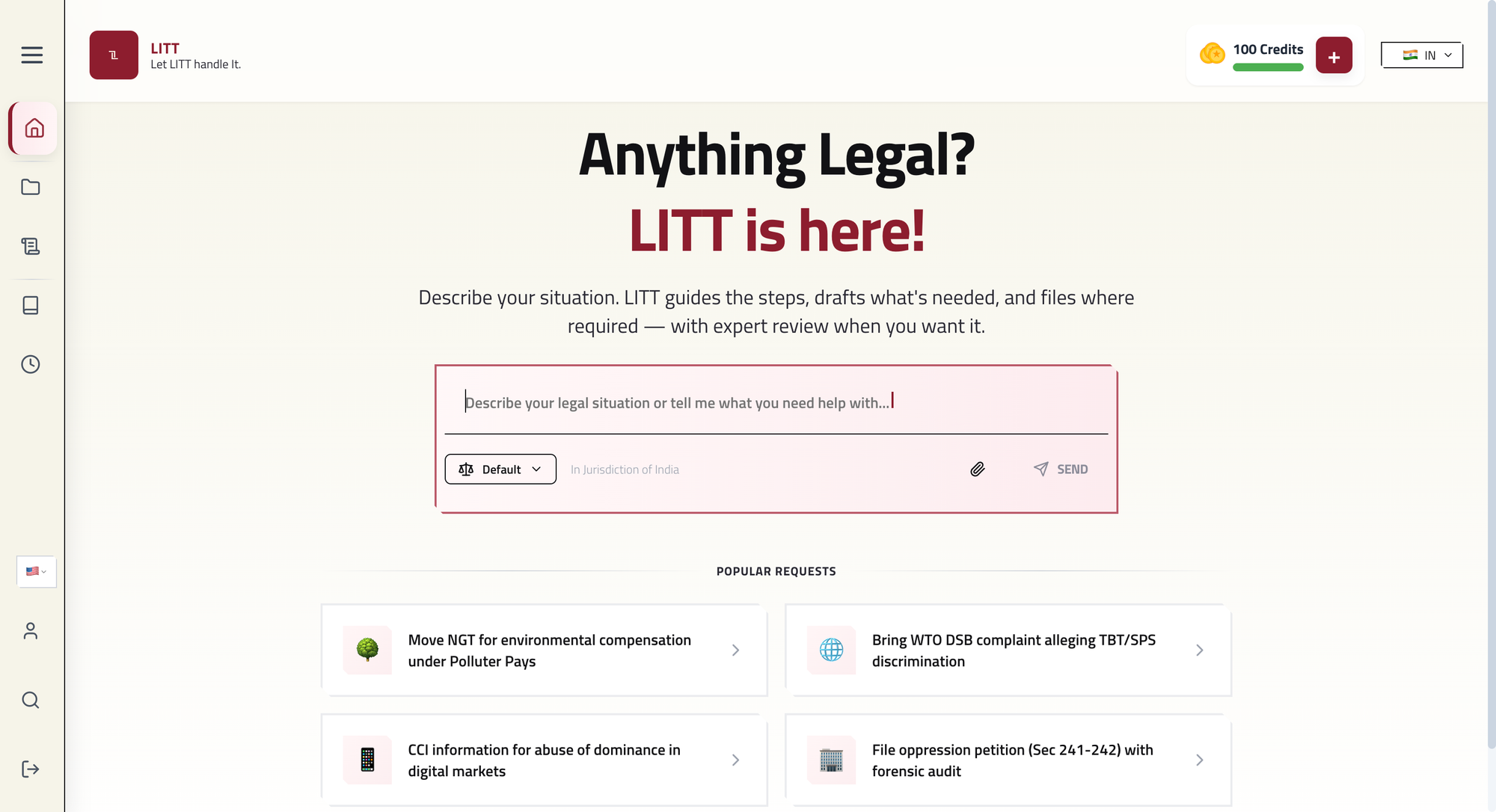In legal judgments, the doctrine of obiter dicta refers to remarks made by a judge that are not essential to the decision’s outcome. These are persuasive but not binding in future cases. Conversely, ratio decidendi denotes the legal reasoning forming the basis of a court’s decision on the precise is

Introduction
- It is always suggested that law students must read case laws and precedents, whether as students or professionals. So that students can comprehend how to interpret a verdict. Each court judgment consists of multiple components. It covers the current laws, facts of the case, and the parties’ contentions are followed by the ultimate verdict. However, the precedent does not represent the entire ruling. The precedent can be interpreted using the ratio decidendi of the case.
- A judicial declaration, often known as a judgment in a legal dispute, is made up of two distinct elements: Ratio Decidendi or Ratio and Obiter Dicta or Obiter.
- In Latin, ratio refers to the reason for a decision or judgment, whereas obiter typically refers to further comments or reflections on the topics involved in the case.
The obiter, which is the non-binding portion of the judgment, frequently shows the reasoning that the court used to reach a decision.
What is ratio decidendi?
- Ratio decidendi is a fundamental concept in legal reasoning and refers to the principle or rationale underlying a court’s decision in a case.
- In the judicial context, it is the reason which is cited for arriving at a decision in a case. Such a reason is not the law that is getting attracted in the contemporary case but is the necessary notion which helps the court arrive at a particular decision.
- The concept of ratio decidendi has its roots in English common law, developing over centuries as judges sought to provide consistency and predictability in legal decision-making.
- It gained prominence in the 19th and 20th centuries as legal scholars and judges articulated its importance in distinguishing binding precedent from mere obiter dicta (statements made in passing).
- In Donoghue v. Stevenson case[1], the House of Lords established the modern concept of negligence and the duty of care owed by manufacturers to consumers. The ratio decidendi emphasized the principle that a manufacturer owes a duty of care to the ultimate consumer of its products.
- As the facts cannot be similar in other cases, the observations closely connected with the facts made by the judge cannot be binding in the other cases though the similar laws are attracted but the reasons for arriving at a decision are binding. In case there are multiple reasons for deciding in a manner, all those reasons will be binding in the subsequent cases.
- Later in Roe v. Wade[2], the US Supreme Court held that legalized abortion nationwide. The ratio decidendi emphasized the right to privacy under the Due Process Clause of the Fourteenth Amendment, establishing a framework for evaluating abortion laws based on trimesters of pregnancy.
- In the case of Commissioner of Income Tax vs M/s Sun Engineering Works Private Limited[3], the Supreme Court held that, “while applying the decision to a later case, the court must carefully try to ascertain the true principle laid down by the decision of the Supreme Court and not to pick out words or sentences from the Judgment divorced from the context of question under consideration by the court to support their reasoning”.
What is Obiter Dicta?
- Obiter dicta refers to statements made by a judge in a legal opinion that are not essential to the decision of the case at hand.
- Unlike ratio decidendi, which forms the binding precedent and is crucial to the outcome of the case, obiter dicta are incidental remarks or observations made by the judge.
- These statements are not essential to the court’s reasoning or the outcome of the case and do not form part of the binding precedent.
- In London Street Tramways vs. London County Council,[4] House of Lords discussed the legal doctrine of “ultra vires” (beyond one’s legal power). While deciding that certain actions of the London County Council were ultra vires, the Court made an obiter dictum stating that Parliament could not bind its successors.
- While obiter dicta do not carry the force of law and are not binding on lower courts or future cases, they nonetheless contribute to the richness of legal discourse. But they provide insights into judicial thinking, illuminate the reasoning behind a decision, and sometimes anticipate future legal developments or reforms.
- In Mohandas Issaradas vs. A.N. Sattanathan[5], the court talked about obiter dictum as the opinion expressed by the judges in the court during the time they pronounced the judgment. But these statements must not have any importance in the judgment. Obiter dicta are not important constituents for arriving at the decision but are only helpful in helping the circumstances. A statement that is obiter dictum, is just incidental remarks and nothing else.
Difference between Ratio Decidendi and Obiter Dicta
| Ratio Decidendi | Obiter Dicta |
| The principle or rationale underlying a court’s decision in a case. | Peripheral remarks or observations or opinions by a judge in a judgment |
| Essential to arrive at the decision | Not Essential to the reasoning of the court or the outcome of the case |
| Has a binding effect | Has persuasive effect |
| Lays down laws for the future and are of high importance. | Does not carry that much legal authority |
In Career Institute Educational Society v Om Shree Thakurji Educational Society[6], the court noted that it is not everything said by a Judge when giving judgment that constitutes a precedent. The only thing in a Judge’s decision binding as a legal precedent is the principle upon which the case is decided and, for this reason, it is important to analyze a decision and isolate from it the obiter dicta.
Conclusion
Understanding the distinctions between ratio decidendi and obiter dicta is essential for navigating the complexities of judicial decisions and legal precedent.
By distinguishing between ratio decidendi and obiter dicta, legal scholars, practitioners, and the public can better grasp the underlying rationale of court decisions, appreciate the nuances of legal reasoning, and understand the evolving landscape of law and justice. Recognizing the pivotal role of ratio decidendi in establishing precedent and the supplementary nature of obiter dicta enhances transparency and accountability within the judicial process, ultimately upholding the integrity and coherence of the legal system.
[1] A.C. 562, [1932] UKHL 100
[2] 410 U.S. 113 (1973)
[3] AIR 1993, SC 43
[4] [1898] A.C. 375
[5] AIR1955BOM113
[6] 2023 SCC OnLine SC 586


